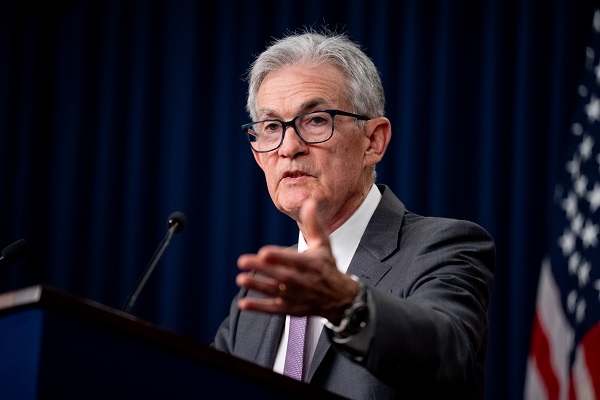UK and US interest rate preview: Fed cuts start now
It’s the last major central bank to lower borrowing costs, but the Americans are set to start cutting Wednesday night. Jury’s still out on what the Bank of England will do.
17th September 2024 15:45

The pressure on investors to find alternatives for their excess cash holdings is set to intensify this week as markets gear up for a shift to a lower interest rate environment.
The US Federal Reserve will officially start its cutting cycle on Wednesday evening, ending the central bank’s longest ever period at the peak of a hiking cycle.
- Invest with ii: What is a Managed ISA? | Open a Managed ISA | Transfer an ISA
Thursday’s announcement by the Bank of England is expected to signal the potential for a second rate cut in November, having initially moved down by 0.25% to 5% on 1 August.
The measured pace of loosening by the Bank is in contrast to heightened Wall Street speculation that the Fed might begin with a “big bang” 0.5% reduction in borrowing costs.
Inflation progress and a softening labour market have allowed the Fed to start cutting rates, although healthy levels of activity make a more forceful move harder to justify.
Traders have priced a 74% chance of an outsized reduction, believing that policymakers may be keen to avoid the trap of rates being in restrictive territory for too long.
Bank of America said: “The market is abuzz with debate over how quickly the Fed will cut, which is unusual for a central bank that typically signals clear intentions.”
- Sign up to our free newsletter for share, fund and trust ideas, and the latest news and analysis
- Shares for the future: big upgrade for this stock
The uncertainty ahead of this week’s meeting is the most pronounced since 2015, serving up a potential trading catalyst when the decision lands tomorrow evening.
But unless there’s evidence the Fed is behind the curve, Bank of America believes the strength of data should matter more for investors than the size of the cut.
It notes that the S&P 500 index has only risen 20% of the time when first cuts have been accompanied by a recession within six months. It is up 100% of the time when there was no recession.
A half-point cut will require careful messaging by the Federal Reserve to avoid frightening markets over the outlook for growth.
Capital Economics points out that every easing cycle over the past three decades in which the Fed has started with a half point cut has coincided with a US recession.
In contrast, in every easing cycle bar one in which the Fed has initially cut by a quarter point the economy has avoided recession.
- Will interest rate cuts reduce returns on money market funds?
- Fidelity Multi-Asset Income video: where to find income now interest rates are falling
- Bond Watch: using bonds to beat savings accounts
The speculation over a series of Federal Reserve rate cuts means the US dollar index has fallen by 5% against a basket of six major currencies since June.
Gold has also traded at an all-time high near to $2,585 an ounce, having risen by about 24% so far this year. The precious metal benefits from lower US rates as they lower the opportunity cost of holding the non-yielding asset.
UBS Global Management expects these trends to continue as it sees the potential for 100 basis points of rate cuts this year and a similar amount in 2025. It added: “That will erode returns on cash and adds pressure on investors to find alternatives for excess cash holdings.”
Support for the pound is also likely to come from this week’s messaging by the Bank of England, whose meeting-by-meeting approach fuels expectations of higher for longer interest rates.
Deutsche Bank sees a 7-2 vote in favour of no change, alongside an increase in the amount of quantitative tightening. It added: “We continue to expect quarterly rate cuts over the next couple of years, before the Bank Rate settles at 3% around summertime 2026.
These articles are provided for information purposes only. Occasionally, an opinion about whether to buy or sell a specific investment may be provided by third parties. The content is not intended to be a personal recommendation to buy or sell any financial instrument or product, or to adopt any investment strategy as it is not provided based on an assessment of your investing knowledge and experience, your financial situation or your investment objectives. The value of your investments, and the income derived from them, may go down as well as up. You may not get back all the money that you invest. The investments referred to in this article may not be suitable for all investors, and if in doubt, an investor should seek advice from a qualified investment adviser.
Full performance can be found on the company or index summary page on the interactive investor website. Simply click on the company's or index name highlighted in the article.
Editor's Picks